Maryville university: NURS661: Exam 3 questions well answered latest 2022
Document Content and Description Below
What area of the brain is most often linked to violence among patients? Prefrontal- cortex Which personality disorder is often associated with self-harming behavior? BPD Know the risk ... factors associated with suicide among patients Family history of suicide Family history of child maltreatment Previous suicide attempt(s) History of mental disorders, particularly clinical depression History of alcohol and substance abuse Feelings of hopelessness Impulsive or aggressive tendencies Cultural and religious beliefs (e.g., belief that suicide is noble resolution of a personal dilemma) Local epidemics of suicide Isolation, a feeling of being cut off from other people Barriers to accessing mental health treatment Loss (relational, social, work, or financial) Physical illness Easy access to lethal methods Unwillingness to seek help because of the stigma attached to mental health and substance abuse disorders or to suicidal thoughts Single, living alone Be able to identify protective factors among patients at risk for suicide Effective clinical care for mental, physical, and substance abuse disorders Easy access to a variety of clinical interventions and support for help seeking Family and community support (connectedness) Support from ongoing medical and mental health care relationships Skills in problem solving, conflict resolution, and nonviolent ways of handling disputes Cultural and religious beliefs that discourage suicide and support instincts for self-preservation difference between suicidal gestures and self mutilation **INTENT **suicide: experiencing stressors for which they see no escape from, and choose to end life- feel worthless and hopeless ** the infliction of pain reassures them that they are still alive, which is especially true if they are experiencing emotional numbness or are feeling disconnected from the world around them. Additionally, self-injury can result in a rush as a result of chemical changes in the brain, which can easily become addictive and highly dangerous. What is self harm? Self-harm is a form of mutilation while suicide is the deliberate act of taking one's own life. Know which medication has been linked to reducing suicidal ideation among patients Lithium Understand what lethality means the capacity to cause death or serious harm or damage. who are the patients with the highest lethality? Narcissists What compulsion is most commonly seen in patients with OCD? Checking 63% Washing 50% Counting 36% Need to ask or confess 31% Symmetry and precision 28% Hoarding 18% What is an obsession? intrusive thoughts What is a compulsion? irrational behavior performed repeatedly How would these (obsession and compulsion) present in a case scenario (Hoarding) Characterized by acquiring and not discarding things deemed to be of little to no value; was originally considered a subtype of OCD, but now considered its own diagnostic entity Epidemiology of obsession and compulsion (Hoarding ~2-5% of population, some research shows prevalence as high as 14% Etiology of compulsion and obsession (Hoarding) 80% of hoarders with one 1st degree relative Biological of compulsion and obsession (Hoarding) lower metabolism in the posterior cingulate cortex and occipital cortex or hoarders, may account for cognitive impairments, such as attention and decision making deficits Genetics of compulsion and obsession (Hoarding) link between hoarding behavior and markers on chromosome 4q, 5q, 17q; another study found COMT gene on chromosome 22q11.21 might contribute to susceptibility Clinical features of compulsion and obsession (Hoarding) accumulate possessions passively rather than intentionally; hoarding can interfere with work, social interactions, and basic activities like eating and sleeping; inability to organize possessions; at the core, hoarders are driven by the fear of losing items (ie. keeping piles of old newspapers, because of the belief that forgetting information will lead to serious consequences; onset due to stressful event treatment of compulsion and obsession (Hoarding) does not usually occur until 40-50s, even if began in adolescence; patient have very little insight into their behavior, usually seek treatment under pressure; difficult to treat, effective treatments for OCD show little benefit with hoarding; in one study 18% responded to CBT and meds What is the first line treatment for hoarding disorder? CBT, includes training in decision making and categorizing, exposure and habituation to discarding, and cognitive restructuring; include home and in office sessions; studies show 25-34% reduction in hoarding behaviors using this method Goal of treatment of hoarding get rid of a significant amount of possessions pharmacological treatment of hoarding disorder SSRIs (produce mixed results) Know the most common co-morbid psychiatric diagnosis associated with OCD Major depressive disorder (MDD) 67% Social phobia 25% Tourette's disorder 5-7% Tics 20-30% **Other comorbid dx, alcohol use, GAD, specific disorders, panic disorder, eating disorder, personality disorders Treatment for body dysmorphic disorder Tricyclic drugs, MOAIs, and pimozide (Orap) -individual studies Cloripramine (Anafranil), and fluoxetine (Prozac) -reduce symptoms 50% Augment with buspirone (BuSpar), lithium (Eskalith), methylphenidate (Ritalin) or antipsychotic Psychotherapy for body dysmorphic disorder CBT Clinical presentation of hoarding disorder persistent difficulty discarding items, the desire to save items to avoid negative feelings associated with discarding them, significant accumulation of possessions that clutter active living areas and significant distress or impairment in areas of functioning. The main treatment for hoarding disorder is: cognitive behavioral therapy. hoarding disorder and medication treatment Medications may be added, particularly if you also have anxiety or depression. There are currently no medications approved by the Food and Drug Administration (FDA). Most commonly SSRI Trichotilomania basics More common in females What percent of those with trichotilomania eat their hair 30-40% and 1/3 experience hazardous bezoars (hairballs) etiology of trichotilomania mother-child relationship, fear of being left alone, recent object loss which hair is often pulled? scalp 2 types of pulling with trichotilomania focused pulling (intentional act) and automatic pulling (unaware of pulling during sedentary activities) average age of onset for trichotilomania mean age 17, onset early teens [Show More]
Last updated: 2 years ago
Preview 1 out of 10 pages

Buy this document to get the full access instantly
Instant Download Access after purchase
Buy NowInstant download
We Accept:

Reviews( 0 )
$13.50
Can't find what you want? Try our AI powered Search
Document information
Connected school, study & course
About the document
Uploaded On
Nov 15, 2022
Number of pages
10
Written in
Additional information
This document has been written for:
Uploaded
Nov 15, 2022
Downloads
0
Views
65

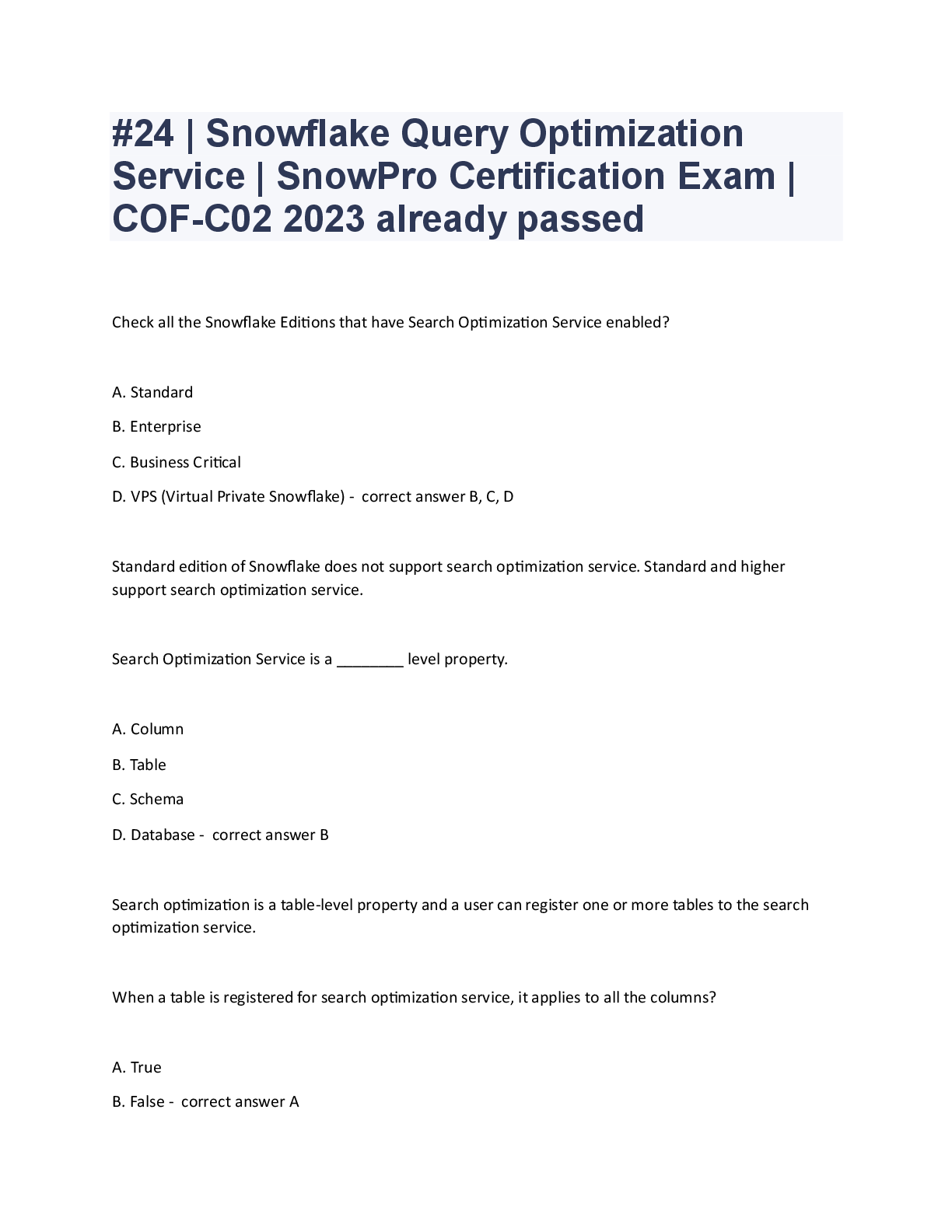



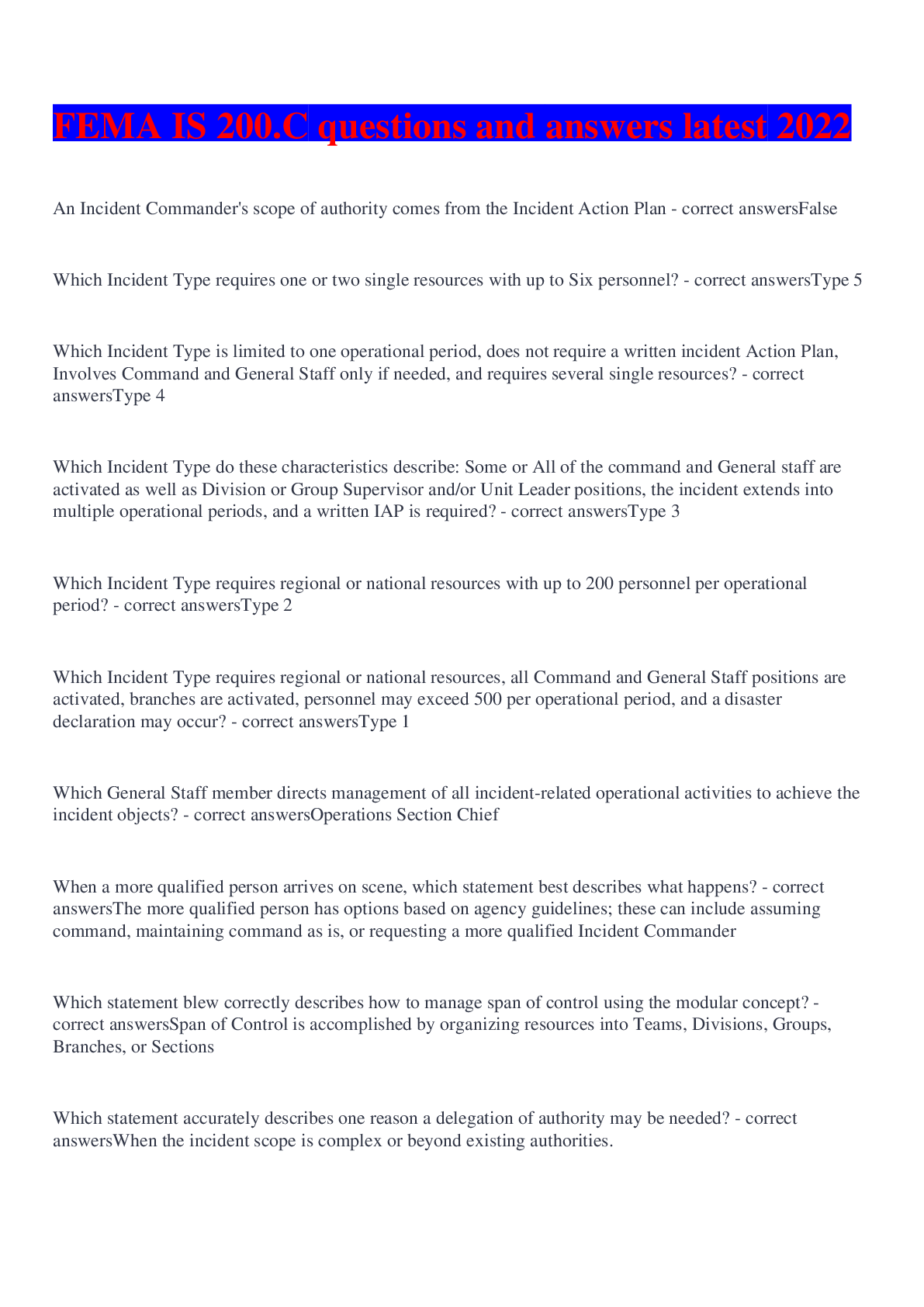
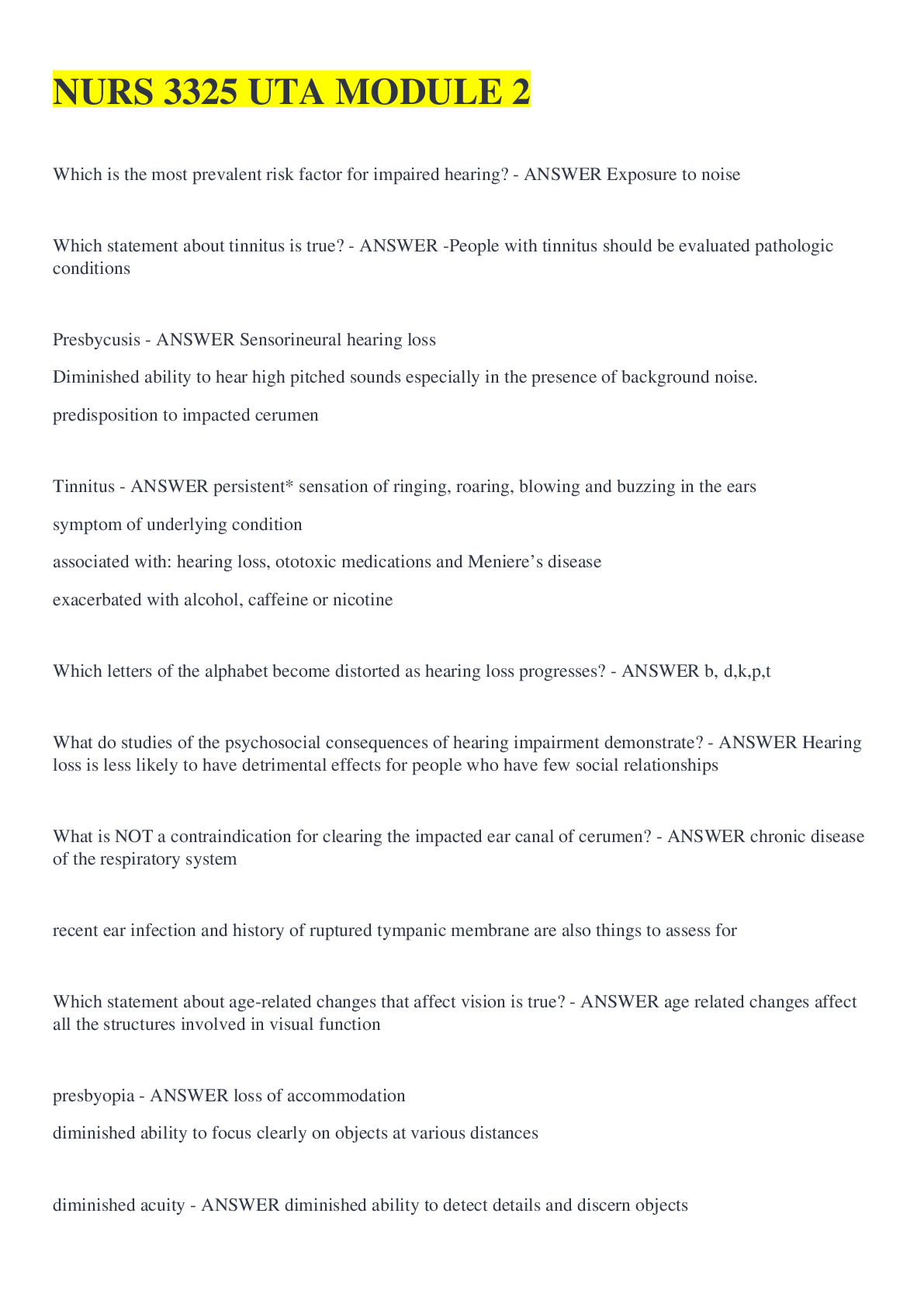
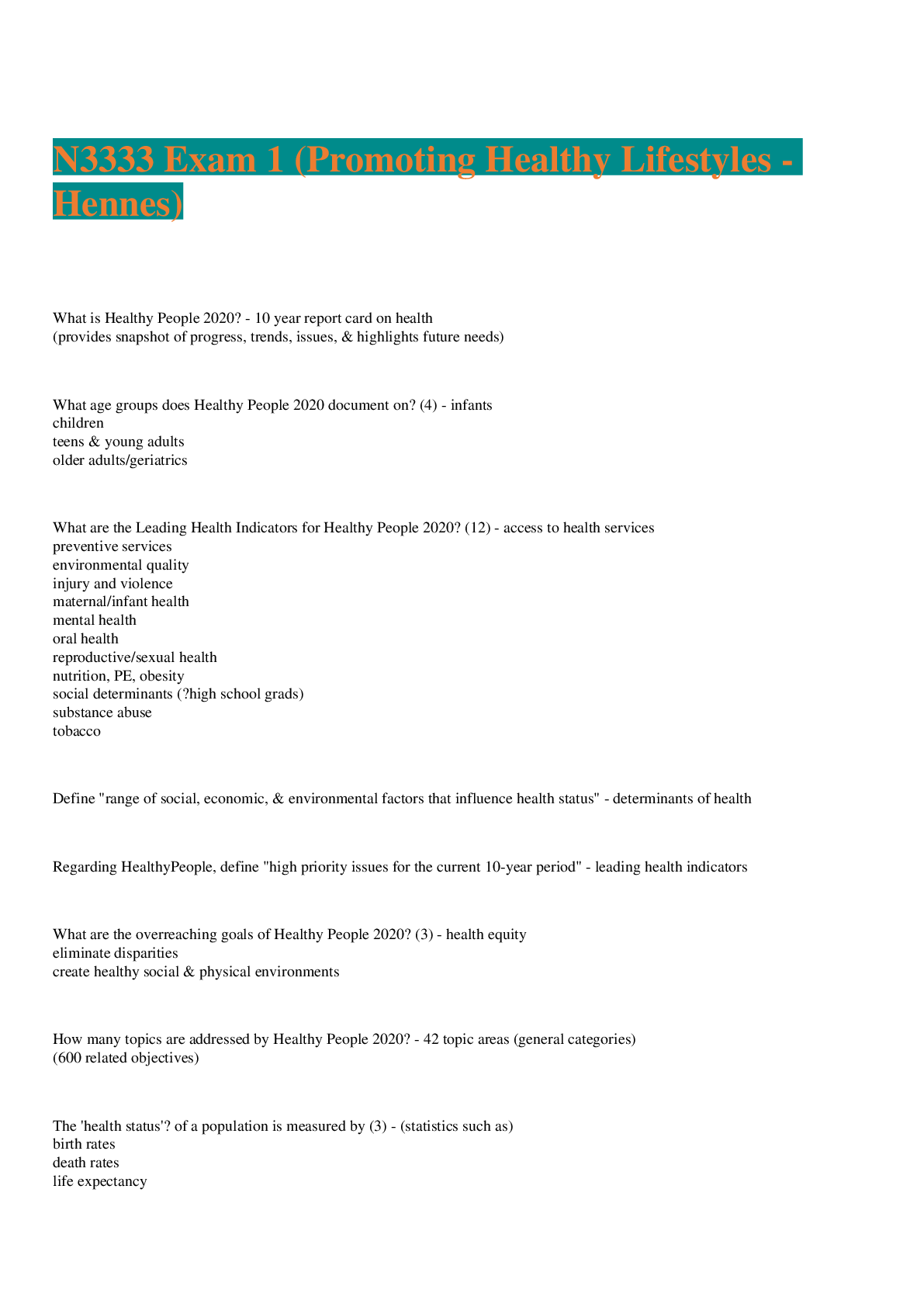
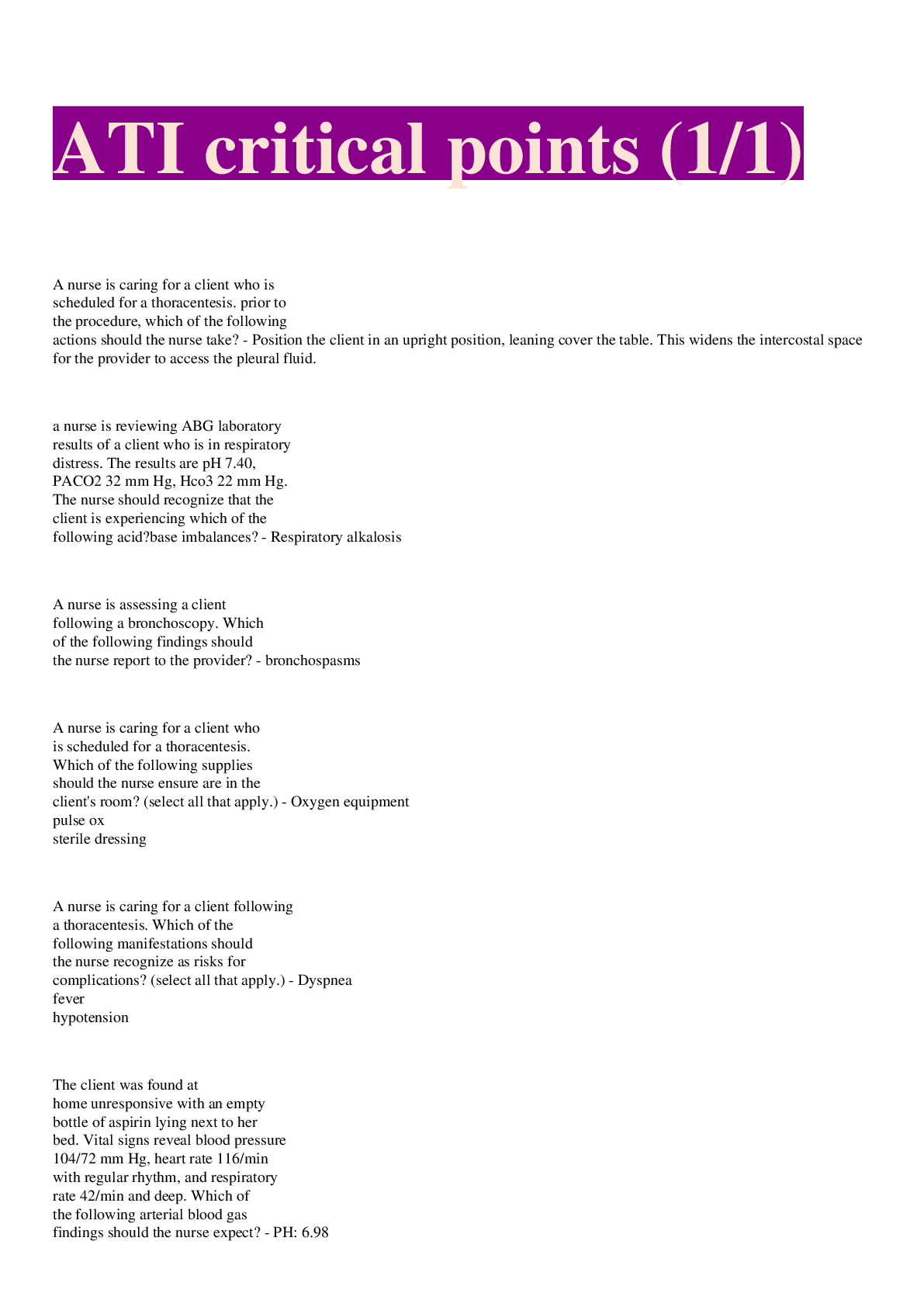
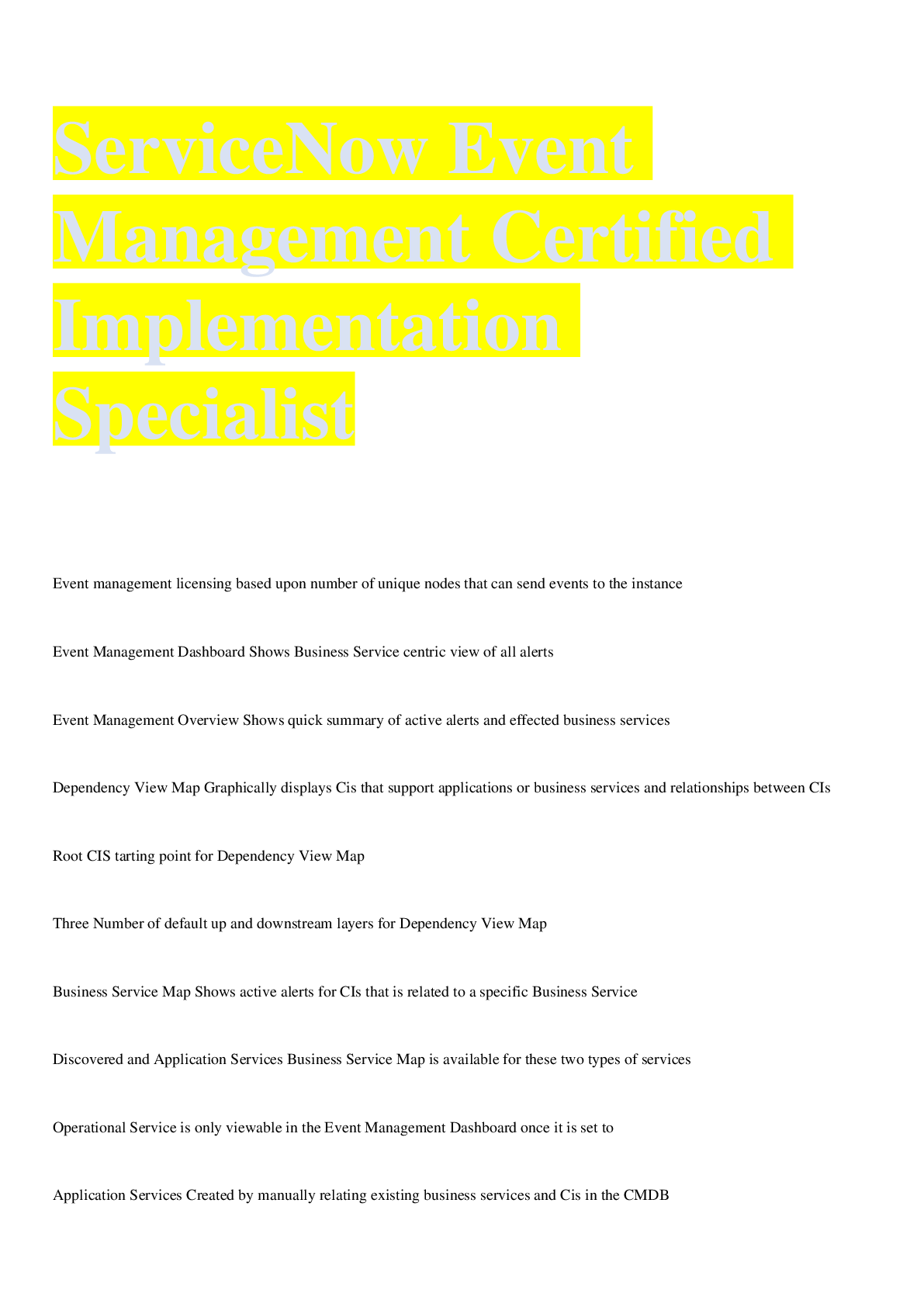
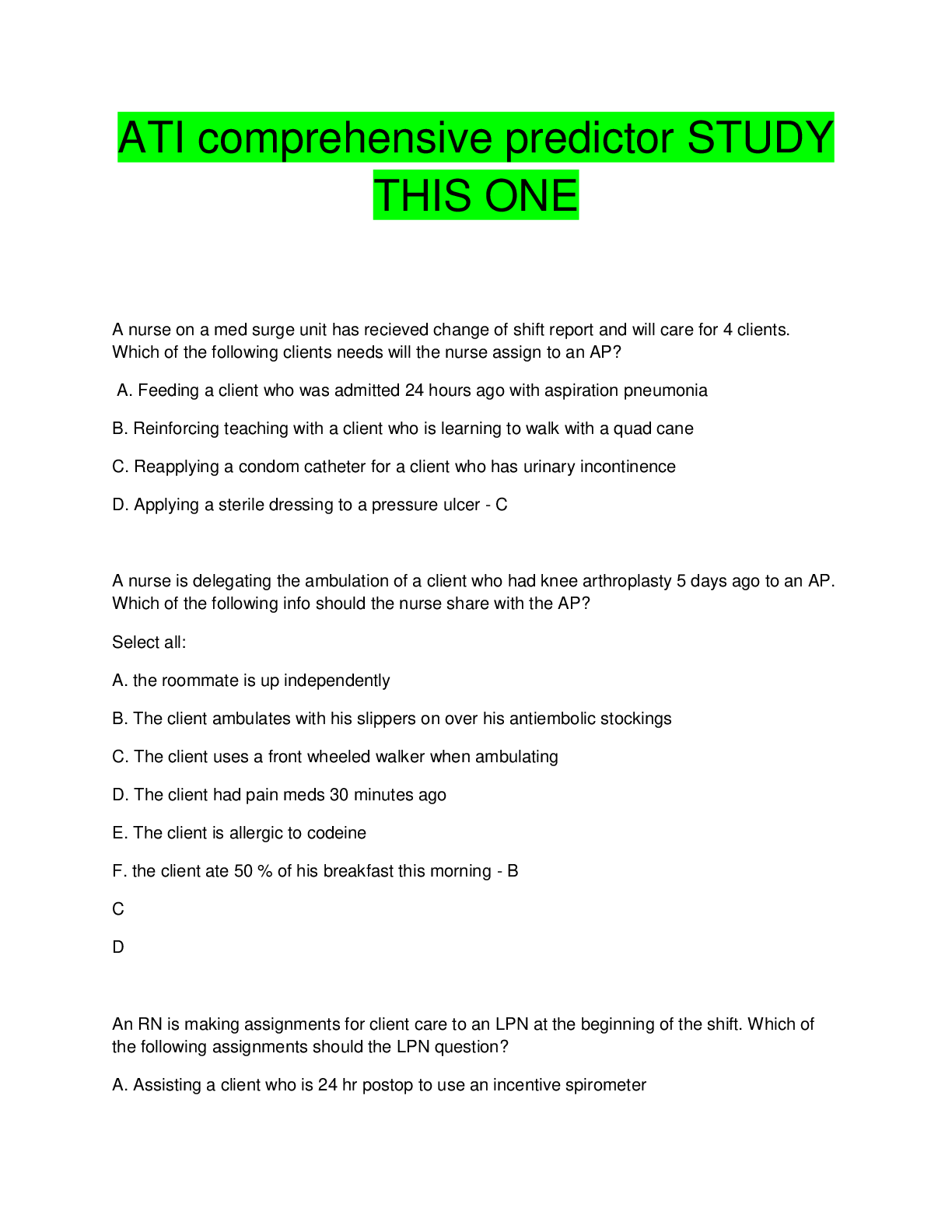
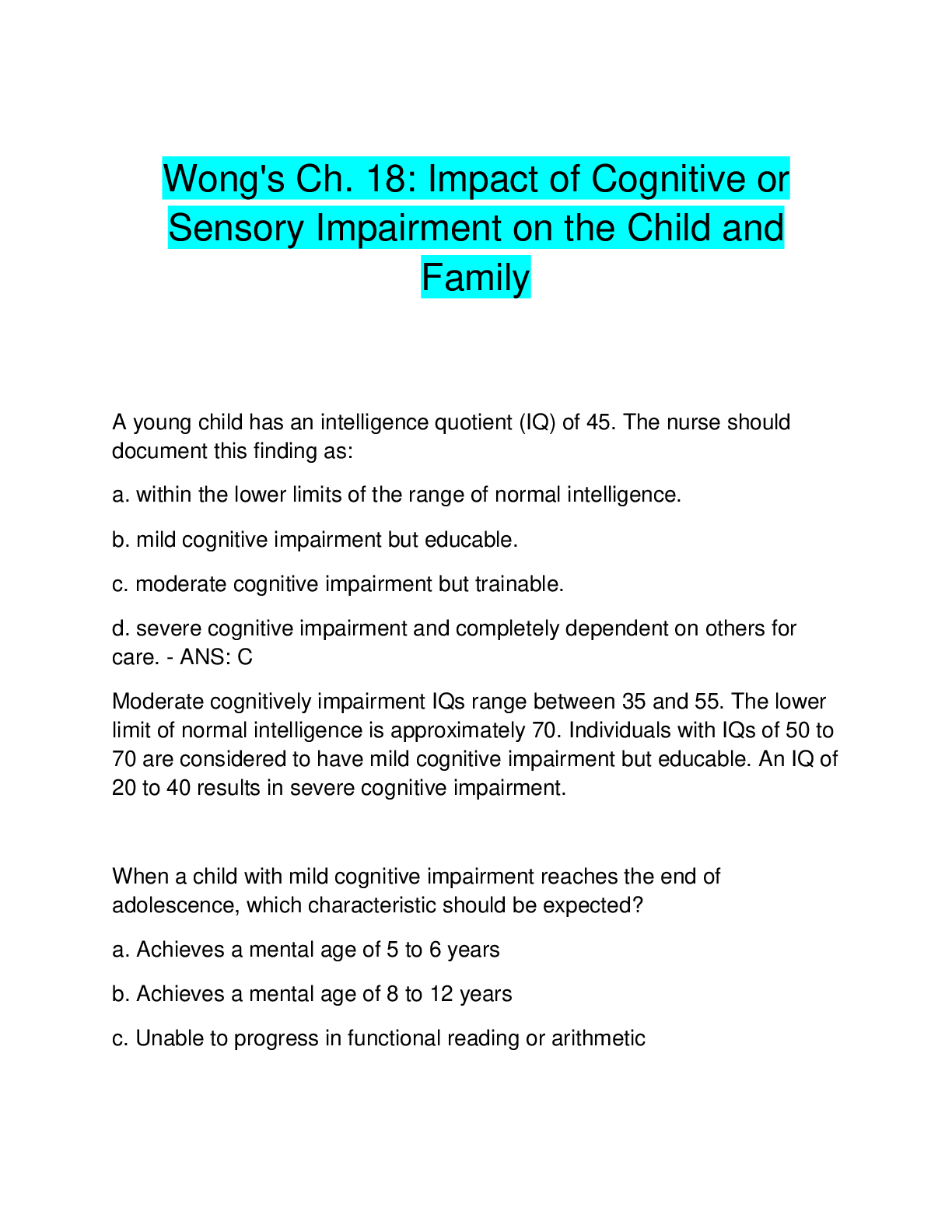
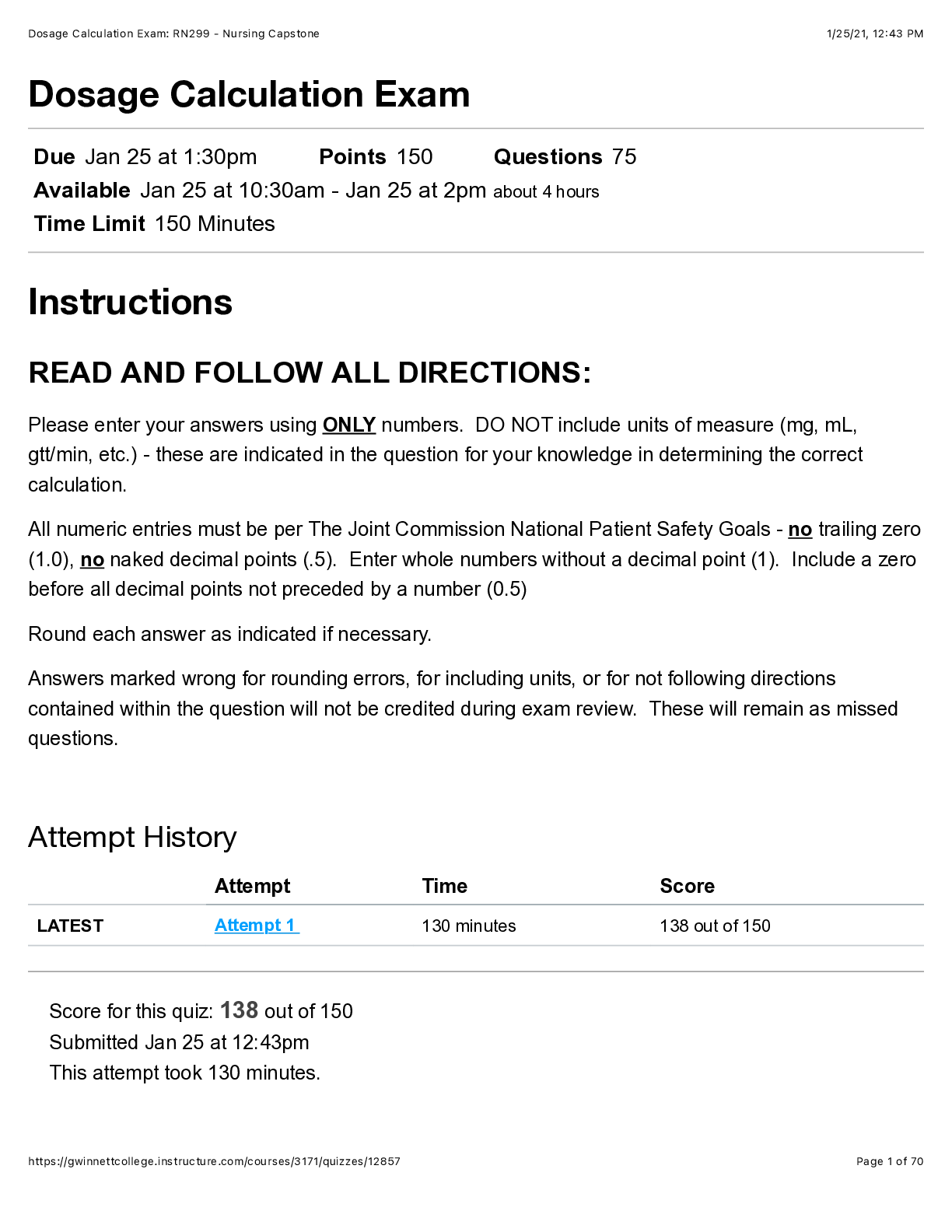







.png)





